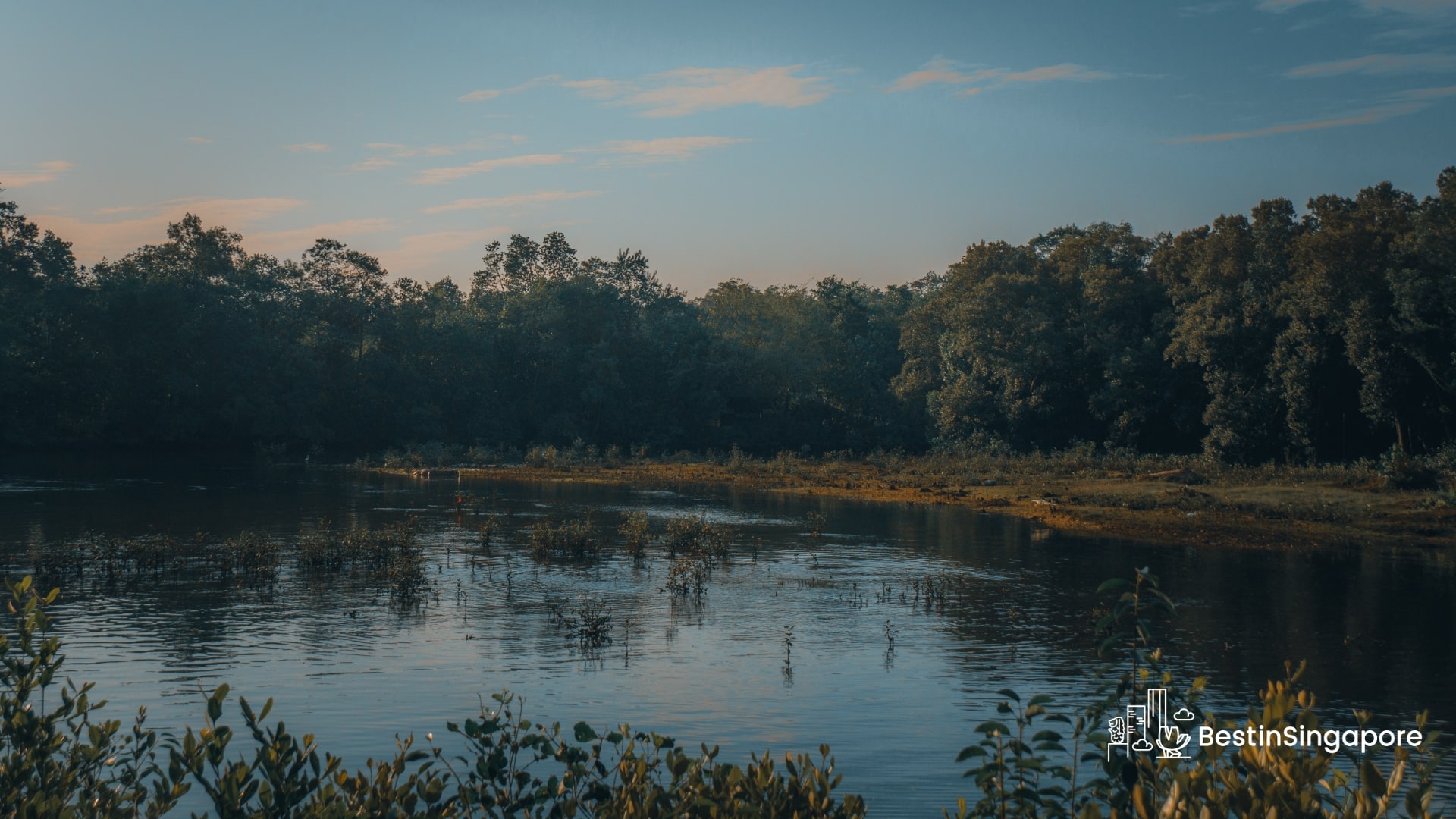Mangrove Paradise: A Guide to Sungei Buloh Wetland Reserve
One thing I love about Singapore is that despite being a metropolis, it still has public parks and nature reserves where people can go to escape and relax. Among these parks and reserves, one of my favorites is the Sungei Buloh Wetland Reserve.
It’s the first wetlands reserve to be gazetted in Singapore, and it’s also considered a paradise for mangroves and migratory birds. In 2003, it was listed as an ASEAN Heritage Park, making it a popular tourist destination.
Make the most of your visit to the reserve with this guide.
Things to Know
Address: 301 Neo Tiew Crescent, Singapore 718925
History
— From: wilderness.sg
Many parks and nature reserves in Singapore—like MacRitchie Reservoir and the Botanic Gardens—have been around for more than a century, but that is not the case for the Sungei Buloh Wetland Reserve. In fact, it only gained prominence in 1986.
During that year, the members of the Singapore Branch of the Malayan Nature Society made a call to conserve the area because of its unusually high variety of bird species. Eventually, the government responded to the call and made the area a park in 1989.
Over the years, the Parks & Recreation Department (now known as the National Parks Board) continued developing the area, and in 2001, they changed the area’s status from being a park to a nature reserve to ensure that the flora and fauna are protected.
The space for the reserve also increased; it started at 87 hectares, but now, it spans 130 hectares. In 2002, Sungei Buloh Wetland Reserve was gazetted just like Labrador Nature Reserve, Central Nature Reserve, and Bukit Timah Nature Reserve.
How to Get There
Car: Driving is the best way to reach Sungei Buloh Wetland Reserve since it has three parking lots, namely the Neo Tiew Carpark (near the Wetland Center), Kranji Carpark C, and Kranji Carpark B (both are near the Visitor Center).
MRT/Bus: If you choose to ride the MRT, you have to alight at Kranji MRT station, and from there, take the Kranji Express bus, which operates from 8:30 am to 5:45 pm every day. You can also ride SMRT Bus 925 from the station and stop at Carpark B.
Best Time to Visit
— From: bentanksu
Sungei Buloh Wetland Reserve is open daily from 7 am to 7 pm, and ideally, you can come any time you want.
That said, if you want to avoid the heat, the best time to visit will be in the morning or late afternoon. You can even catch the sunrise or sunset!
Additionally, if you’re a bird enthusiast, September to March is the best time to visit the reserve. This is when the migratory birds come to the area, so you’ll be able to spot many of them.
Dos and Don’ts
— From: charissaseaward
When visiting Sungei Buloh Wetland Reserve, it’s important to follow the site’s dos and don’ts. These are as follows:
- Maintain a respectful distance from any wild animal you encounter. Additionally, don’t feed them.
- Don’t bring your pets into the reserve.
- Hiking is the only physical activity allowed here; cycling and jogging are prohibited. PMDs, scooters, rollerblades, and skateboards aren’t allowed on-site as well.
- Other prohibited activities include smoking, fishing, poaching, flying drones, and playing music on loudspeakers.
- In the event of inclement weather—especially thunderstorms—head to the nearest shelter or observation hide. You shouldn’t be out and about during this time.
Other Tips to Keep in Mind
— From: syahmi.exe
In addition to the aforementioned regulations, here are a few more tips to keep in mind to make your visit to the reserve comfortable and enjoyable.
- Wear comfortable clothes, preferably long pants, shirts with long sleeves, a cap, and close-toed shoes.
- Bring insect repellent. There are many bugs, mosquitos, and other insects in the reserve.
- If you want to spot birds, bring a good pair of binoculars.
What to Do in Sungei Buloh Wetland Reserve
Hike
— From: justynoh
Sungei Buloh Wetland Reserve is quite spacious, so there’s a lot to see and discover—and what better way to discover these wonders than hiking around the area?
To make things better, the nature reserve has a bunch of hiking trails to choose from! These trails have a total distance of roughly 4.3 kilometers, which should take about three hours (or longer if you stop at certain locations).
If you think hiking for 4.3 kilometers is too much, you can just choose one or two trails at a time. Here are your options.
Forest Trail
— From: edwinteokimleong
Distance: 300 meters
Difficulty: Easy
New to hiking? Don’t worry because Sungei Buloh Wetland Reserve has the easy Forest Trail.
At only 300 meters, this trail is quite short, and you can finish it in about 15 minutes or less if you’re a fast hiker. The terrain is also pretty even—no bumps and inclines—so the experience is pretty chill; you can focus on enjoying the view of your surroundings.
Understandably, the scenery is mostly trees, but you can spot some wild animals if you’re lucky. During my visit, I was able to see a common sun skink and a brown snake.
Mid-Canopy Walk
— From: katerinaliucn
Distance: 150 km
Difficulty: Easy
Another perfect trail for beginners is the Mid-Canopy Walk, which is the shortest trail in the nature reserve at 150 meters.
With this trail, you’ll get to walk on a suspended boardwalk.
The boardwalk is also a few meters above the ground, so you’re a lot closer to the trees. You can get a glimpse of the birds and other animals living on the branches.
Additionally, you’ll hear cicadas chirping as you walk the trail. The sound is almost like a lullaby to me, somehow putting me at ease.
Coastal Trail
— From: srimi_srims
Distance: 1.3 km
Difficulty: Moderate
The Coastal Trail is one of the most popular trails in the reserve, and it also has some of the most exciting views. This trail features a mixture of boardwalk and cemented pathways, and it will take you from a dense forest to the coast.
You’ll first enjoy lush greenery, then drink in the views of the straits of Johor.
Additionally, you’ll come across various pods, each acting as observatories for various wildlife like kingfishers and dragonflies.
Mangrove Boardwalk
— From: stuckonurban
Distance: 600 meters
Difficulty: Easy
If you’re doing the Coastal Trail, you might want to take a detour and go on the Mangrove Boardwalk. As the name suggests, this trail lets you stroll along the mangrove trees—an incredibly serene experience.
You can find shelter areas along the boardwalk, and these are usually frequented by avian enthusiasts and photographers. Bird spotting here takes a lot of patience—bird’s nests blend really well with the greenery—so keep that in mind if you want to do it.
Migrating Bird Trail
— From: johngoesbirbing
Distance: 1.9 km
Difficulty: Moderate
At 1.9 kilometers, the Migrating Bird Trail is the longest one in the nature reserve, looping around the side of the marshland area.
If you visit during the bird migration period, you can spot these migratory birds on the trail. Some photographers position themselves on the boardwalk, while others go to the observation hides.
In the middle of the trail, you can find the Buloh Tidal Ponds, where you can find some shorebird species, such as common redshanks, whimbrels, and Mongolian plovers. There are also other animals here, such as mudskippers and monitor lizards.
Junior Adventure Trail
— From: zhiyong_liu and yihsiu_tsai
The Junior Adventure Trail isn’t technically a hiking trail; it’s more of a playground.
It has two outdoor obstacle courses that mimic challenging trails. These obstacles are designed to look like mangroves and stones, and the main goal is to hop from one to another.
These obstacle courses may seem simple and straightforward, but they actually test your balancing skills and eye-foot coordination, so it can be pretty challenging at times. Give it a try and see if you can conquer them!
Go on a guided walk
— From: jolvyn_qing
While it’s fun to hike on your own or with your friends and family, another option you can do is to go on a guided walk. Luckily, Sungei Buloh Wetland Reserve hosts several free guided walks!
Every Saturday (except public holidays and the day before holidays), at 9:30 am, there’s a free guided walk in English. If you speak Mandarin or Japanese, there’s an option for you as well.
Registration for all guided walks is required, so you need to check out the National Parks’ events page to book your spot.
Catch the sunrise at Eagle Point
— From: xingrrk2020
If you decide to come early in the morning, then you might be able to catch the sunrise at Eagle Point, and it’s such a pretty sight!
The sun rises along the coast, painting everything in vivid orange hues. Plus, in the distance, you can see the silhouette of the cityscape of Johor Bahru (a major city in Malaysia).
If you have a camera phone, you’d want to capture this moment.
Have a fun photoshoot at Kingfisher Pod
— From: undeadlove
The Kingfisher Pod is one of the pods you can find in reserve, and it’s probably everyone’s favorite.
It has a unique architecture: it’s almost spherical in design, and there’s no roof. So if you go inside the pod and look up, you’ll get a stunning view of the sky!
Because of this, the Kingfisher Pod is the perfect place to have a fun photoshoot. Posing along the steps provides you with a great shot as well.
Spot birds quietly from any of the bird hides
— From: janicesiajx
The great variety of birds is one of the reserve’s main selling points, so it’s not a surprise that bird-watching is a popular activity here. If you’re interested but don’t want to walk around the reserve to spot some birds, you can head to a bird hide instead.
Bird hides are shelters that are “hidden”—that is, they’re designed to blend in with the environment and used to observe birds without alarming all the nearby wild animals. Usually, photographers stake their spot here for some time to capture the best photos.
Bird hides also have information boards about the various birds commonly found in the area. Reading these boards is a favorite activity of mine because I love learning more about the birds.
Be on the lookout for all kinds of wildlife
— From: j.sicarius
Birds aren’t the only forms of wildlife in Sungei Buloh Wetland Reserve.
Some of the animals you can see here include Eurasian whimbrels, common greenshanks, curlew sandpipers, and smooth otters. Rare wild animals like the lesser whistling duck and milky stork can be spotted in the reserve as well.
Saltwater crocodiles are occasionally spotted in the reserve, but no one is certain if they’re native to the area or if they come from Malaysia or Indonesia.
There’s still so much left to be discovered, so keep your eyes peeled!
Drink in the gorgeous scenery from the Aerie Tower
— From: _jennysim_
Aerie Tower is the most popular observation hide in Sungei Buloh Wetland Reserve. It’s 18 meters tall and located at the highest point of the reserve, which means you’ll get a 360-degree view of the surrounding greenery!


